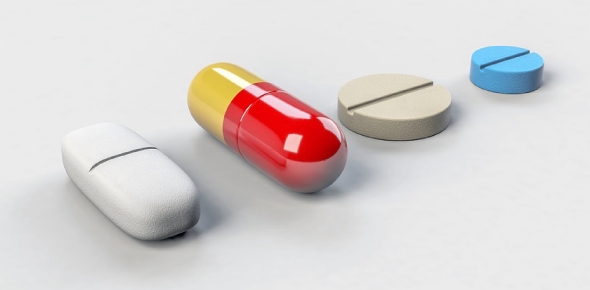Antibiotic Resistance

Questions regarding this article on: antibiotic resistance
- 1.
Bacteriostatic antibiotics kill bacteria.
- A.
True
- B.
False
Correct Answer
B. FalseExplanation
Bacteriostatic antibiotics slow bacteria growth (Bacteriocidal antibiotics kill bacteria)Rate this question:
-
- 2.
Antibiotics belonging to which of the four annexes, in the EU legislation governing maximum residue limits, are prohibited in animals destined for human consumption?
- A.
1
- B.
2
- C.
3
- D.
4
Correct Answer
D. 4 -
- 3.
Antibiotics are effective against viral infections.
- A.
True
- B.
False
Correct Answer
B. False -
- 4.
MIC, is the minimum concentration of a drug.
Correct Answer
inhibitory
Inhibitory - 5.
MBC, is the minimum concentration of a drug
Correct Answer
bacteriocidal
Bacteriocidal - 6.
What are the three stages of 'The Cascade'?
- 7.
Pharmacodynamics is:
- A.
The effect of the drug on the body
- B.
The effect of the body on the drug
- C.
The effect of the drug on the pathogen
- D.
The balance between the body and the drug
Correct Answer
C. The effect of the drug on the pathogen -
- 8.
A breakpoint of 0.05mg/kg is established for a new antibiotic, which of the following bacteria are susceptible to it?
- A.
Bacteria A - Reduction in numbers observed at a concentration of 0.5mg/kg
- B.
Bacteria B - All bacteria eliminated at a concentration of 0.035mg/kg
- C.
Bacteria C - Reduction in numbers observed at a concentration of 0.04mg/kg
- D.
Bacteria D - All bacteria eliminated at a concentration 0.06mg/kg
- E.
Bacteria E - No change in bacteria numbers at a concentration of 0.05mg/kg
Correct Answer(s)
B. Bacteria B - All bacteria eliminated at a concentration of 0.035mg/kg
C. Bacteria C - Reduction in numbers observed at a concentration of 0.04mg/kg -
- 9.
How is antibacterial resistance measured using disc diffusion?
- A.
Colour change observed in susceptible strains
- B.
Diameter of clear area around disc
- C.
Area of clear area around disc
- D.
Colour change observed in resistant strains
Correct Answer
B. Diameter of clear area around disc -
- 10.
Below are some examples of antibiotic resistance mechanisms. Check the boxes next to Intrinsic resistance mechanisms and leave Acquired resistance mechanisms unchecked.
- A.
Low permeability envelope
- B.
Mutations
- C.
Inherent Efflux Pump
- D.
Plasmid-mediated resistance
Correct Answer(s)
A. Low permeability envelope
C. Inherent Efflux Pump -
- 11.
Which of these antibiotics inhibit cell wall synthesis?
- A.
Fluoroquinolones
- B.
Tetracycline
- C.
Penicillin
- D.
Trimethoprim
Correct Answer
C. Penicillin -
- 12.
What is the mechanism which makes beta-lactams antibiotics, antimicrobial?
- A.
Inhibit RNA synthesis
- B.
Inhibit DNA synthesis
- C.
Inhibit prostaglandin synthesis
- D.
Inhibit Folic acid synthesis
- E.
Inhibit protein synthesis
Correct Answer
C. Inhibit prostaglandin synthesisExplanation
Inhibition of prostaglandin synthesis is the equivalent of inhibition of cell wall synthesis.Rate this question:
-
- 13.
What is the mechanism which makes trimethoprim antibiotics, antimicrobial?
- A.
Inhibit RNA synthesis
- B.
Inhibit DNA synthesis
- C.
Inhibit prostaglandin synthesis
- D.
Inhibit Folic acid synthesis
- E.
Inhibit protein synthesis
Correct Answer
D. Inhibit Folic acid synthesis -
- 14.
What is the mechanism which makes fluoroquinolone antibiotics, antimicrobial?
- A.
Inhibit RNA synthesis
- B.
Inhibit DNA synthesis
- C.
Inhibit prostaglandin synthesis
- D.
Inhibit Folic acid synthesis
- E.
Inhibit protein synthesis
Correct Answer
B. Inhibit DNA synthesis -
- 15.
Bacteria developed the enzyme, beta-lactamase as a mechanism of resistance to beta-lactam antibiotics.
- A.
True
- B.
False
Correct Answer
A. True -
- 16.
Beta-lactam antibiotics can also be resisted by means of adaptions to the binding-protein
Correct Answer
penicillin
Penicillin - 17.
The gene responsible for the resistance of MRSA to penicillin derivatives is:
- A.
MecT
- B.
MecA
- C.
MecB
- D.
Mec-X
Correct Answer
B. MecA -
- 18.
Aminoglycosides mechanism of action is to bind to what?
- A.
30S ribosome
- B.
RNA
- C.
70S ribosome
- D.
DNA
Correct Answer
A. 30S ribosome -
Quiz Review Timeline +
Our quizzes are rigorously reviewed, monitored and continuously updated by our expert board to maintain accuracy, relevance, and timeliness.
-
Current Version
-
Mar 21, 2022Quiz Edited by
ProProfs Editorial Team -
Jan 11, 2011Quiz Created by
Jameswatts1990
- Anesthetics Quizzes
- Cardiology Quizzes
- Chinese Medicine Quizzes
- Drug Quizzes
- Forensic Medicine Quizzes
- Gastroenterology Quizzes
- Geriatrics Quizzes
- Gynecology Quizzes
- Hematology Quizzes
- NASM Quizzes
- Neurology Quizzes
- Obstetrics Quizzes
- Oncology Quizzes
- Ophthalmology Quizzes
- Pediatrics Quizzes
 Back to top
Back to top


